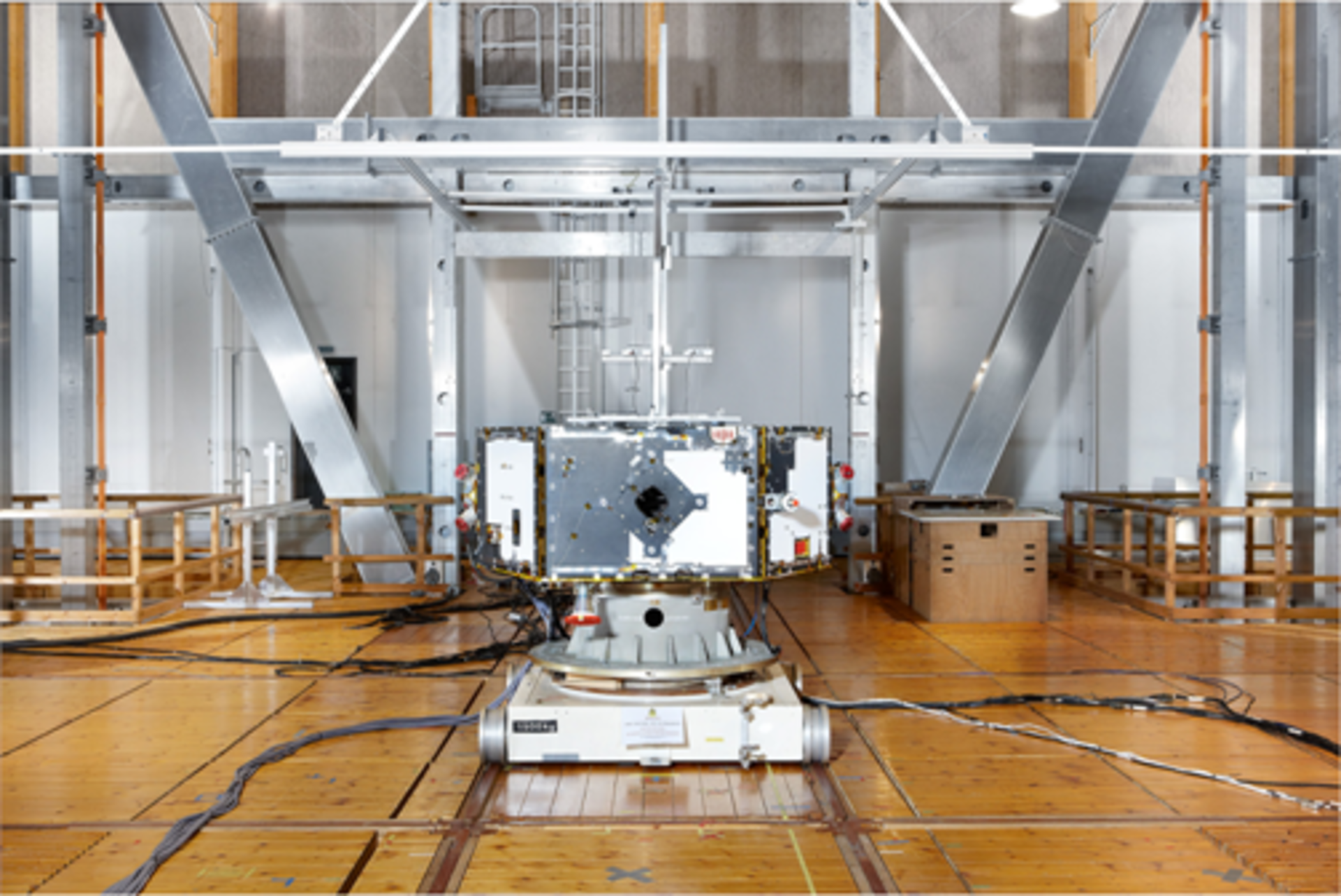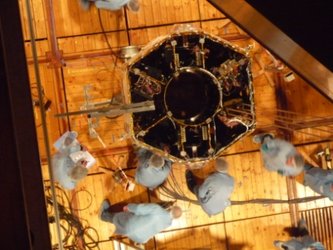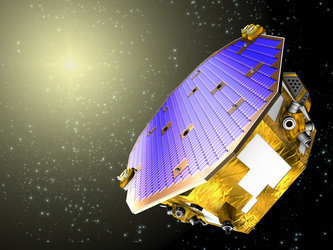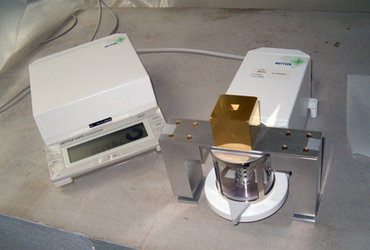LISA Pathfinder: assembled with magnetism in mind
For the LISA Pathfinder spacecraft, the materials used to build it were carefully selected, with for instance non-magnetic titanium metal used for structural segments. “But we cannot avoid all magnetic parts,” Mr Trougnou added.
“There are - of course - electronic components plus cables, connectors and packaging, the hull thrusters, and some subsystems such as power storage and communications with Earth which incorporate small permanent magnets.”
Spacecraft designers did their best to place the magnetically active elements as far from the test masses as possible – magnetic influence dropping off sharply with distance due to the ‘inverse-cube law’.
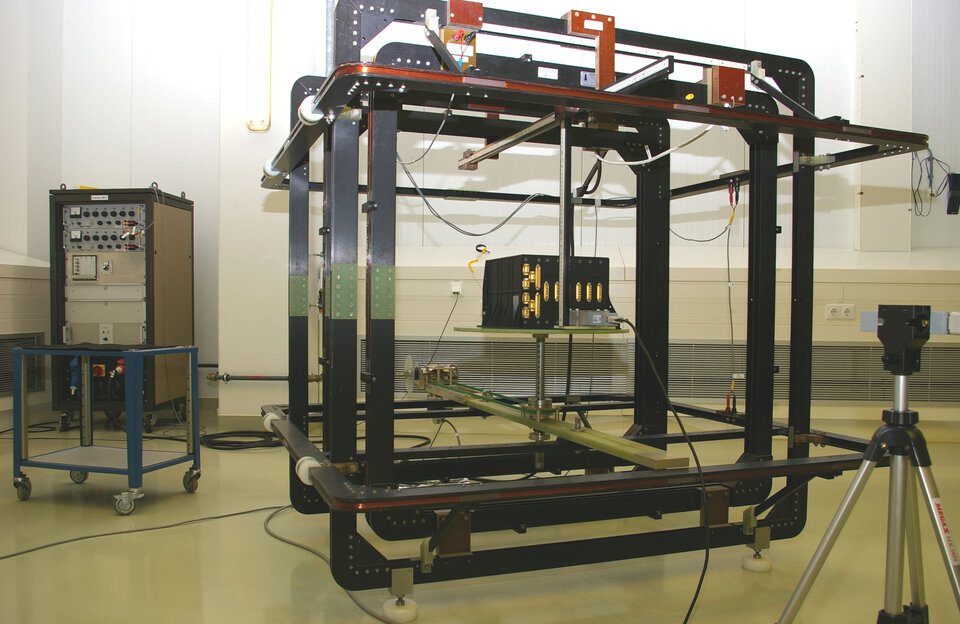
Detailed magnetic simulations were also carried out, adding up the sum of all predicted magnetic properties of LISA Pathfinder components – but these still needed to be verified by actual measurements.
“Some tests were performed at the component level – particularly for components located very close to the test masses – at the University of Barcelona,” said Mr Trougnou. “We also tested at the equipment unit level, both here at ESTEC and at EADS Astrium Stevenage UK.”
The ESTEC testing was carried out using refurbished magnetic coil facilities originally designed in the 1980s and used in preparation for all magnetically sensitive missions since then – the comet-intercepting Giotto, explorer of the Sun’s poles Ulysses and plasma mapper of the terrestrial magnetosphere Cluster.
Design put to magnetic test

Then this February came the opportunity to magnetically test the entire spacecraft at another specialist site, the Magnetic Field Simulation Facility (MFSA) of Germany’s IABG, in Ottobrunn near Munich. Optimised for large magnetic testing, the MFSA is officially designated as an ESA External Laboratory.
Its buildings made entirely from wood, avoiding steel beams or floors, the MFSA is set in a forest far from population centres or power lines to minimise electromagnetic interference.
“The facility is fitted with very large magnetic coils to ‘null’ Earth’s magnetic field across a large volume of several cubic metres,” added Mr Trougnou. “The spacecraft was rolled into place on a wooden trolley and then had magnetometers set inside it.
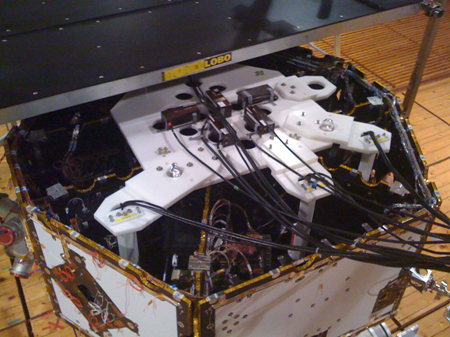
“We then operated the module in the same way it will run in space, for periods of up to 15,000 seconds - several hours - to get a good map of the magnetic field prevailing near the test masses, and how it varies over time.
"The very low noise background of the test facility allowed us to very well characterise the magnetic signature of the spacecraft operated in science mode, and this provided extremely valuable information to calculate the contribution of magnetic effects to our performance budget.”
The rigorous nature of LISA-Pathfinder's magnetic cleanliness programme entailed some unprecedented features, Mr Trougnou concluded: “The acquired experience will be essential for the follow-on LISA mission, whose magnetic cleanliness requirements will be an order of magnitude more stringent. This fresh know-how should also benefit Europe’s wider space industry, notably magnetically-sensitive missions such as Swarm, BepiColombo and SolarOrbiter.”

The mission remains on track for its planned mid-2013 launch. Even in flight, monitoring of the mission’s magnetic performance will continue. LISA-Pathfinder will have its own ‘magnetic diagnostic facility’: magnetometers will detect variations in local magnetism, while a pair of magnetic coils in the vicinity of each test mass will deliberately induce controlled magnetic fields to see how they affect the acceleration noise.
Results from the magnetic diagnostic facility should verify the sensitivity of the test masses in practice, and open up the possibility of subtracting these effects during ground-based analysis – a mathematical way of coming closer still to a truly unperturbed space fall.


